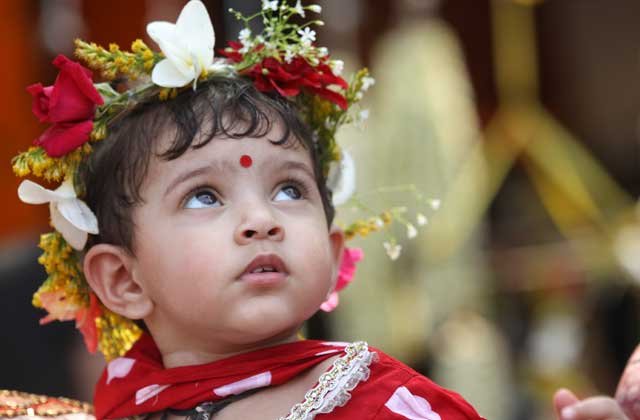Bangla Happy New Year Paola Baishakh or Pahela Boishakh (the first month of Bengali calendar) was the first day of Bangla calendar, ie Bangla New Year. The day is celebrated with a special festival as the Happy New Year in Bangladesh and West Bengal of India. Bengalis living in Tripura also participate in this festival. As a result, it is a universal festival of Bengalis. All the Bengali people from all parts of the world enjoy a new year on this day, trying to forget, all sorrow and misery in the past year. Everyone wishes that the new year is rich and happy. Different levels of businessmen welcome this as an opportunity to start a new business. According to the Gregorian calendar, April 13 or April 15, Pahela Boishakh is celebrated. There is a similarity in this regard in any modern or ancient calendar. Every year on 14th April this festival is celebrated in Bangladesh. According to the modern calendar set by the Bengali Academy, this day has been specified. On this day, all government and non-government organizations in Bangladesh and West Bengal are closed.
The basic difference between Hijri and Christianity with the Bengali calendar is that the Hijri is as a moon and as a Christian observatory. For this reason, the new date of hijri begins in the evening, in the coming of new moons. The English day starts midnight. The first day of Baishakh starts from 12 noon, starting from sunrise, there are many disagreements about it; Traditionally, from the sunrise to the Bangla day counting, but the Bangla Academy from 1 Baisakh of 1402 canceled this rule and started counting day at 12.00 to keep it in line with international norms. The rules were introduced.

source
History
According to the Hindu solar calendar, Bengal was celebrated twelve months ago. This solar eclipse begins in the Gregorian calendar in the middle of April. On the first day of the Hindu solar year, Assam, Bengal, Kerala, Manipur, Nepal, Orissa, Punjab, Tamil Nadu and Tripura were celebrated as an integral part of the culture for the first time. Now as the New Year has become a celebrated festival celebrated for the new year's inauguration, Was not there. Then the Bengali Happy New Year or Pahela Boishakh was celebrated as Arayush festival or seasonal festival. Then its main significance was farming. Since the age of technical application did not start, the farmers had to rely on the season.
After the establishment of the Mughal Empire in India, the emperors used to pay tribute to agricultural products according to the Hijri calendar. But since Hijri Sun is dependent on the Moon, it does not meet the agricultural yields. This forced the farmers to pay salts to Assamese farmers. Mughal emperor Akbar introduced Bangla to achieve the right to pay rent. He originally ordered to bring reforms in the old calendar. According to the order of the emperor, the renowned astronomer and thinker of Bengal, Fatehullah Siraji, built the rules of new Bengali based on solar year and Arabic hijri. The counting of the Bangla calendar began from 10th March or 11th March 1584. However, the counting system was implemented from Akbar's ascension (5 November, 1556). The name of this name was first known as Krishni Son, later Bangad or Bangla Year.
The festival of Pahela Baishakh began from the time of Akbar. Then everybody had to pay all the rent, fees and taxes in the last day of the month of Chaitra. The day after that, land owners of Pahela Boishak used to celebrate the residents of their respective regions with confectionery. Different festivals were organized on this occasion. This festival is turned into a social event, which has been transformed into the present stage. During this time, the main event of this day was to create a Halhata. Halhata is meant to be a new account book. Actually, the process of officially updating the shops' accounts on the first day of Halkat is Bengali. In the village, city or commercial area, at all places, new account books are opened by closing old year's accounts books. Shopkeepers celebrate their customers on the day of Halhuti. This practice is still very common, especially in gold stores.
The news of the celebration of the modern New Year was first available in 1917. In order to win the victory of the British during the First World War, arrangements were made to celebrate and celebrate the first year of Baishakh. Then in 1938 similarities were reported. Later, in 1967, the practice of the first Baishakh celebrations did not become very popular.
Bengali New Year Baphela Boishakh celebration in Bangladesh
Intensive communication with the culture and culture of the rural population with the New Year festival. People in the village wake up early in the morning, wear new clothes and go to relatives and friends to visit the house. The houses are cleaned and arranged fairly well. There is also special dietary arrangement. Boishakhi Mela is organized in the open areas of some villages, on the open ground. There are many different types of eateries for marketing, there are several banana pools organized. In many places, there is a provision for eating pita rice with hilsa fish. An old culture of this day is organizing rural sports competition. It includes boat raising, stick play or wrestling. The biggest event of this wrestling in Bangladesh is 12 in Baishakh, Chittagong's Laldighi Maidan. This is known as Jabber's play game.